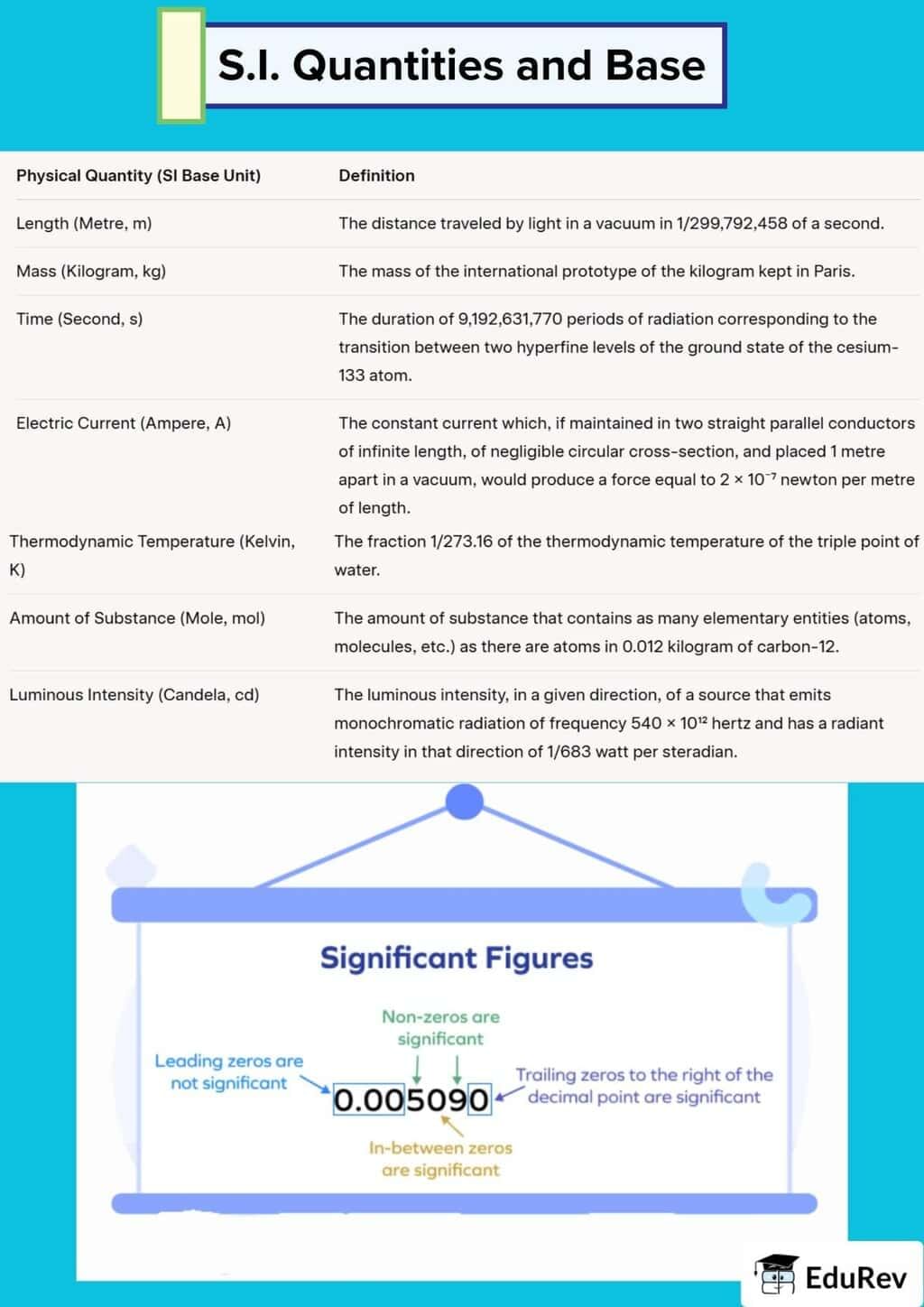NEET Exam > NEET Notes > Physics Class 11 > Infographics: Units and Measurements
Infographics: Units and Measurements | Physics Class 11 - NEET PDF Download

The document Infographics: Units and Measurements | Physics Class 11 - NEET is a part of the NEET Course Physics Class 11.
All you need of NEET at this link: NEET
|
96 videos|367 docs|98 tests
|
FAQs on Infographics: Units and Measurements - Physics Class 11 - NEET
| 1. What are the fundamental units of measurement in the International System of Units (SI) ? |  |
Ans. The fundamental units of measurement in the International System of Units (SI) include the meter (m) for length, kilogram (kg) for mass, second (s) for time, ampere (A) for electric current, kelvin (K) for temperature, mole (mol) for the amount of substance, and candela (cd) for luminous intensity. These units form the basis for measuring physical quantities in science and engineering.
| 2. Why is it important to understand conversions between different units of measurement ? |  |
Ans. Understanding conversions between different units of measurement is crucial because it allows scientists and engineers to accurately communicate and interpret data. Different fields and regions may use different units, and being able to convert between them ensures consistency and accuracy in calculations, experiments, and analyses.
| 3. How do dimensional analysis and the concept of dimensional homogeneity relate to measurements ? |  |
Ans. Dimensional analysis is a method used to check the consistency of equations by ensuring that both sides have the same dimensions. The concept of dimensional homogeneity states that equations must be dimensionally consistent; that is, each term must have the same unit of measurement. This principle is essential for validating physical equations and ensuring that measurements are meaningful.
| 4. What are the common prefixes used in the SI system, and what do they signify ? |  |
Ans. Common prefixes in the SI system include kilo- (10³), mega- (10⁶), giga- (10⁹), tera- (10¹²), centi- (10⁻²), milli- (10⁻³), micro- (10⁻⁶), nano- (10⁻⁹), and pico- (10⁻¹²). These prefixes are used to denote multiples or fractions of the base units, facilitating easier representation of large and small quantities.
| 5. How can errors in measurements affect scientific experiments and results ? |  |
Ans. Errors in measurements can significantly impact scientific experiments and results by leading to incorrect conclusions. Systematic errors can introduce biases, while random errors can cause variability in data. Understanding and minimizing these errors is essential to enhance the reliability and validity of experimental findings and to ensure accurate scientific communication.
Related Searches
















